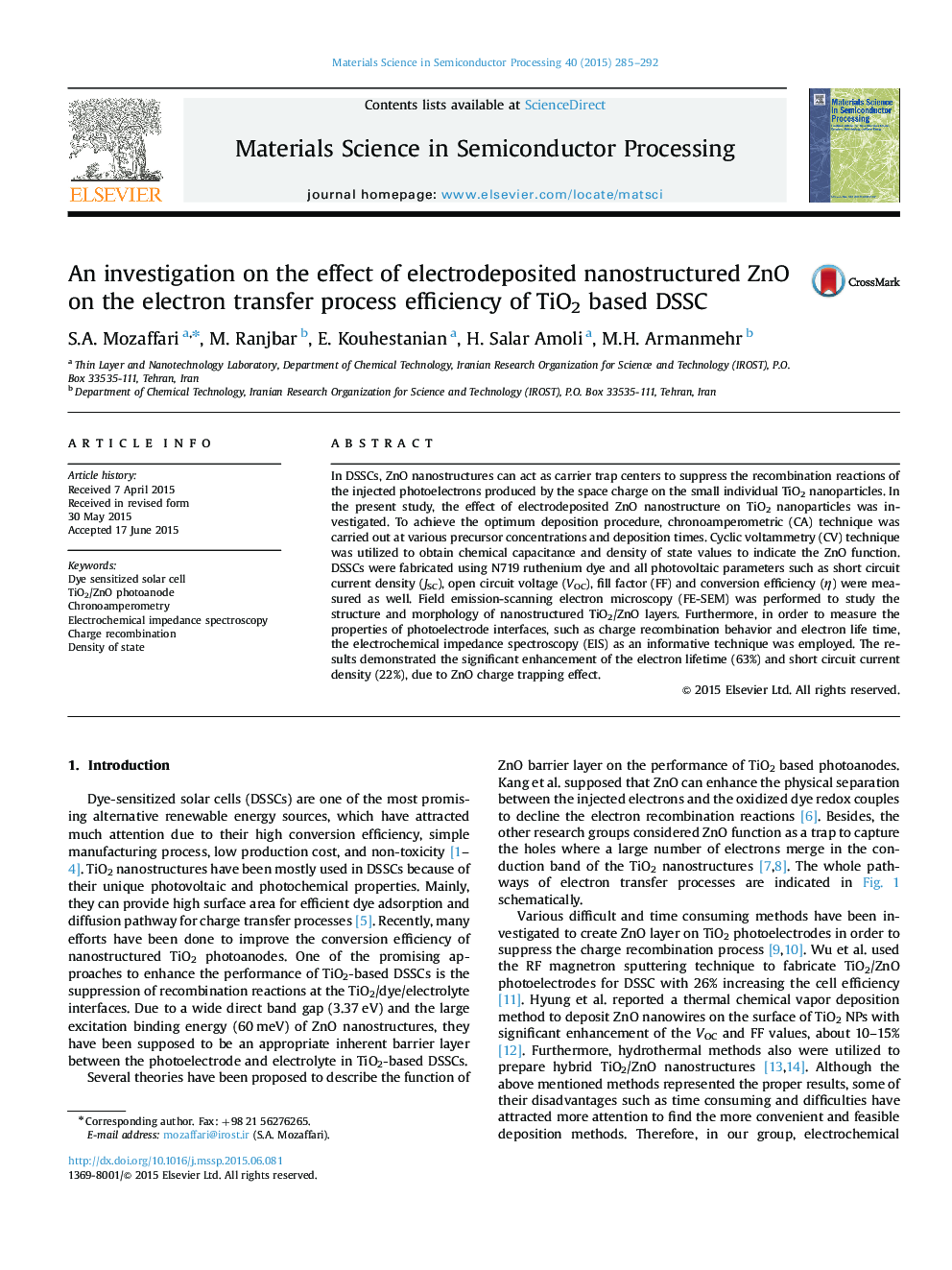| Article ID | Journal | Published Year | Pages | File Type |
|---|---|---|---|---|
| 7118802 | Materials Science in Semiconductor Processing | 2015 | 8 Pages |
Abstract
In DSSCs, ZnO nanostructures can act as carrier trap centers to suppress the recombination reactions of the injected photoelectrons produced by the space charge on the small individual TiO2 nanoparticles. In the present study, the effect of electrodeposited ZnO nanostructure on TiO2 nanoparticles was investigated. To achieve the optimum deposition procedure, chronoamperometric (CA) technique was carried out at various precursor concentrations and deposition times. Cyclic voltammetry (CV) technique was utilized to obtain chemical capacitance and density of state values to indicate the ZnO function. DSSCs were fabricated using N719 ruthenium dye and all photovoltaic parameters such as short circuit current density (JSC), open circuit voltage (VOC), fill factor (FF) and conversion efficiency (η) were measured as well. Field emission-scanning electron microscopy (FE-SEM) was performed to study the structure and morphology of nanostructured TiO2/ZnO layers. Furthermore, in order to measure the properties of photoelectrode interfaces, such as charge recombination behavior and electron life time, the electrochemical impedance spectroscopy (EIS) as an informative technique was employed. The results demonstrated the significant enhancement of the electron lifetime (63%) and short circuit current density (22%), due to ZnO charge trapping effect.
Keywords
Related Topics
Physical Sciences and Engineering
Engineering
Electrical and Electronic Engineering
Authors
S.A. Mozaffari, M. Ranjbar, E. Kouhestanian, H. Salar Amoli, M.H. Armanmehr,
